Week in and week out, we share a lot of rare history related to early horse-drawn vehicles, especially those involved in the opening and growth of the American West. From period photos, catalogs, advertising, and illustrations to business correspondence, salesman's samples, patent models, blueprints, and much more, our archives are packed with forgotten facts and seldom seen survivors. Covering roughly two hundred years of America's horse-drawn transportation, these original parts of the past give us insights into a world few can fully imagine today.
Inside our extensive files, there's a tremendous amount of yesterday we've never had the opportunity to share. An area that's often overlooked is that of city maintenance vehicles such as dump wagons, street cleaners, flushers, oilers, early commercial vacuums, refuse collectors, and soon. Among those specialty pieces is the Tower Wagon. In this case, the name is visual enough to give us a vague idea of the design but the subject requires a more detailed look to fully understand the purposes.
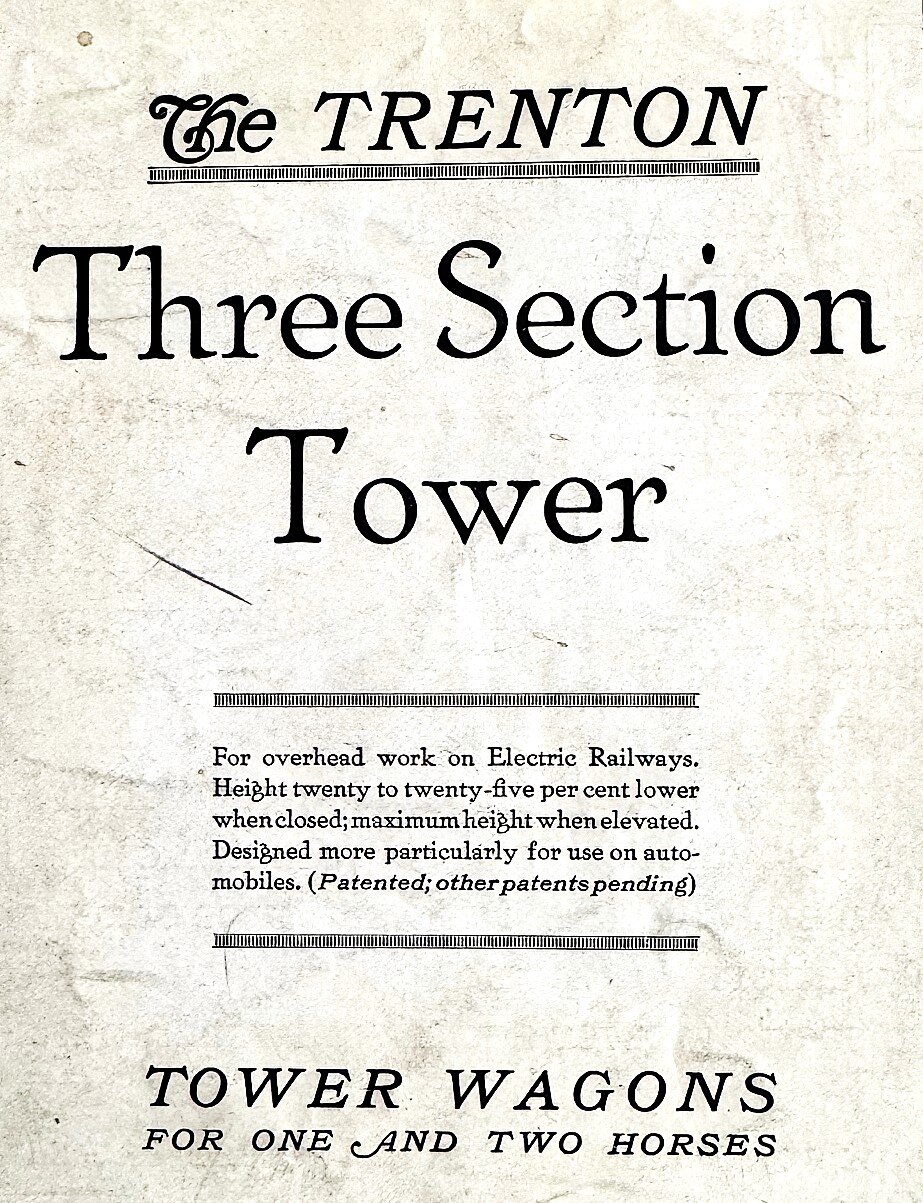
A cover section of a Tower Wagon brochure from the Wheels That Won The West® Archives.
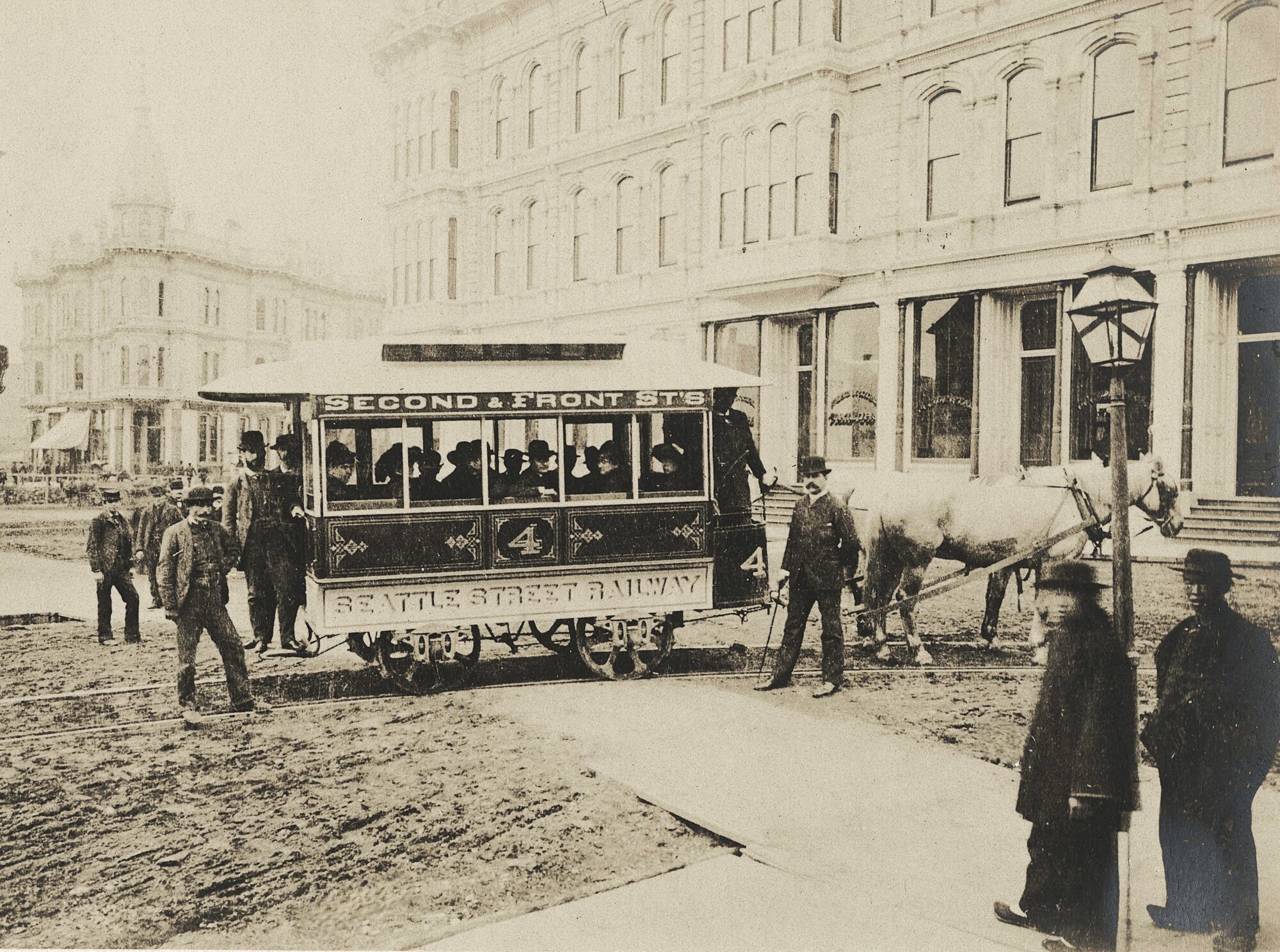
This image was taken in 1884 as the first horse drawn trolley rolled through the streets of Seattle, Washington. Image Courtesy of the Library of Congress.
While horse-drawn trolleys running on rails were in the U.S.well before the Civil War, the world of 'electric' streetcars in America began during the 1880s. In between the time of horse-drawn and electric cars, many cities focused on implementing cable cars. These public transports were drawn by an endless cable running in a slot between the rails and powered by a steam-driven shaft. A tremendous amount of the cable car technology was originated in San Francisco by Andrew Smith Hallidie. Due in large part to Hallidie's vast inventions and lengthy array of patents, these cars were able to safely negotiate the steep slopes and turns of the city streets. It was a shift in transportation that took an unimaginable load off horses in abrupt terrain. While some cities continued using of cable cars for years, electric cars became more widespread by the 1890s and early twentieth century.
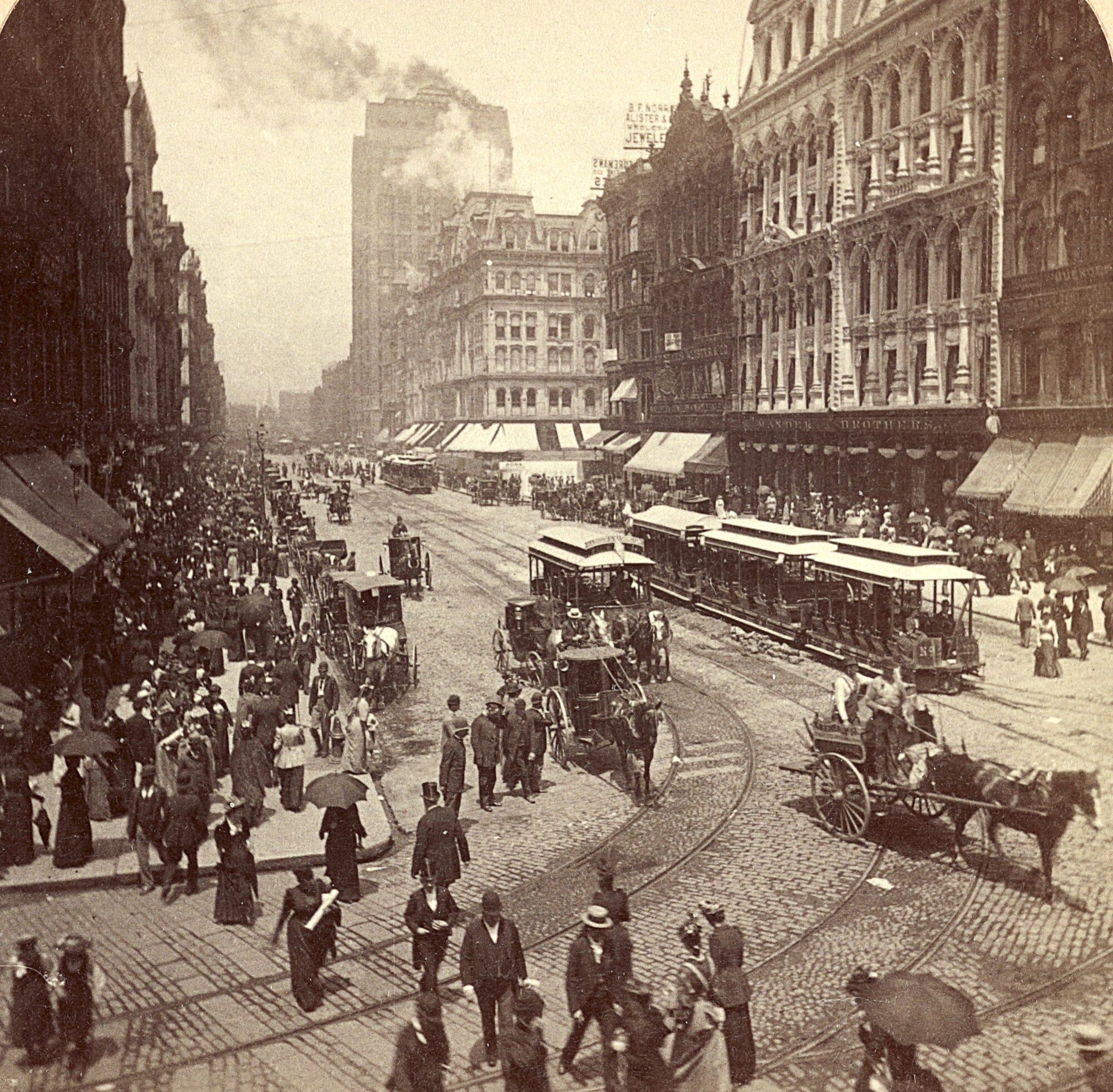
The largest system of cable cars in the U.S. was in Chicago. This 1893 photo shows a diversity of transportation in the city. Note the horse-drawn carts, wagons, carriages, Hansom Cabs, and trolley. Also in the photo is what appears to be a cable car. Courtesy Wiki Commons.
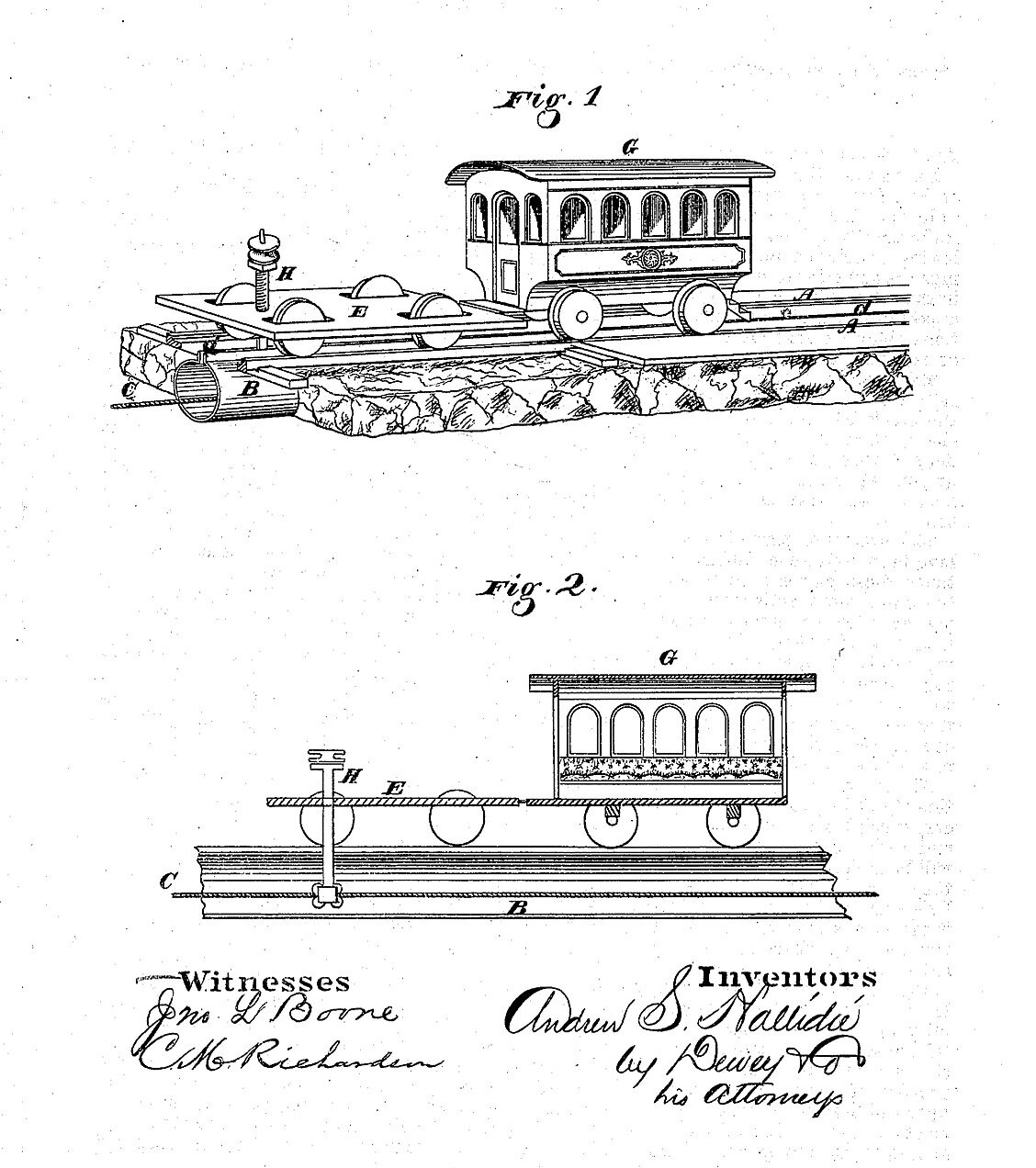
This 1876 patent awarded to Andrew Hallidie helps convey the general idea of how continuous wire rope helped connect and control cable cars. Image from the Wheels That Won The West® Archives.
Almost as soon as the electric streetcar was invented, it was clear that a method for quick, easy repairs and maintenance to the overhead lines would also be needed. Hence, horse-drawn 'Tower' wagons became an invaluable background to life in larger communities. Often used to service the electrical lines of passenger trams or trollies, these wagons were also employed for other jobs on elevated structures, including the painting of poles, installing overhead lines, replacing lights, and trimming trees. They were even used as rescue platforms since they were able to be quickly raised as a fire escape to those trapped in multi-story buildings.
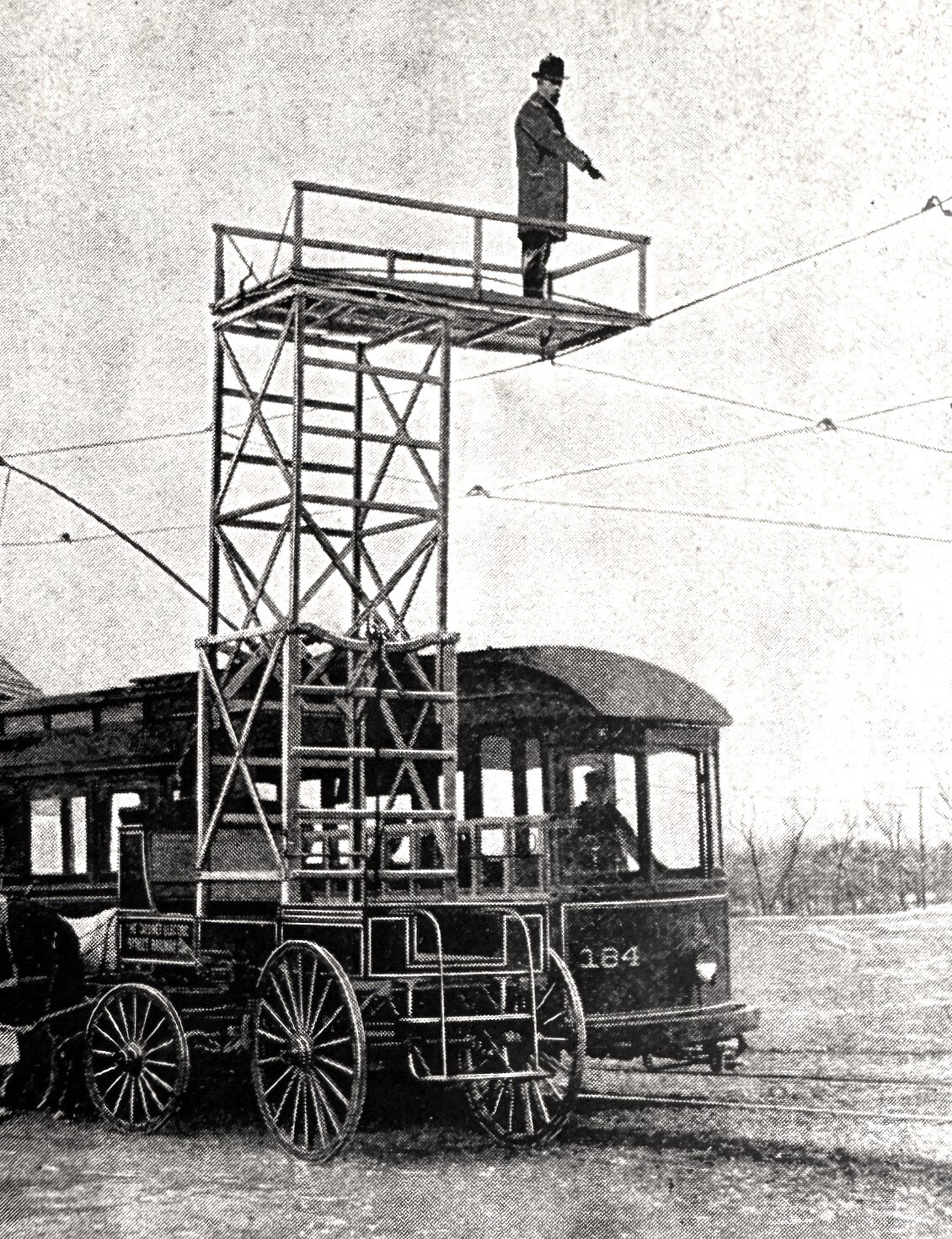
The telescoping frame on this Tower Wagon can be raised to multiple heights and features a rotating platform that cantilevered over the top of operating streetcars. Image Courtesy Wheels That Won The West® Archives.
Tower-designed commercial vehicles can easily date to the 1880s and elements of the design were used well into the twentieth century. Quite a few patents were granted to the concept and makers often proclaimed their ideas to have greater strength, stability, versatility, ease of operation, and economies of use.
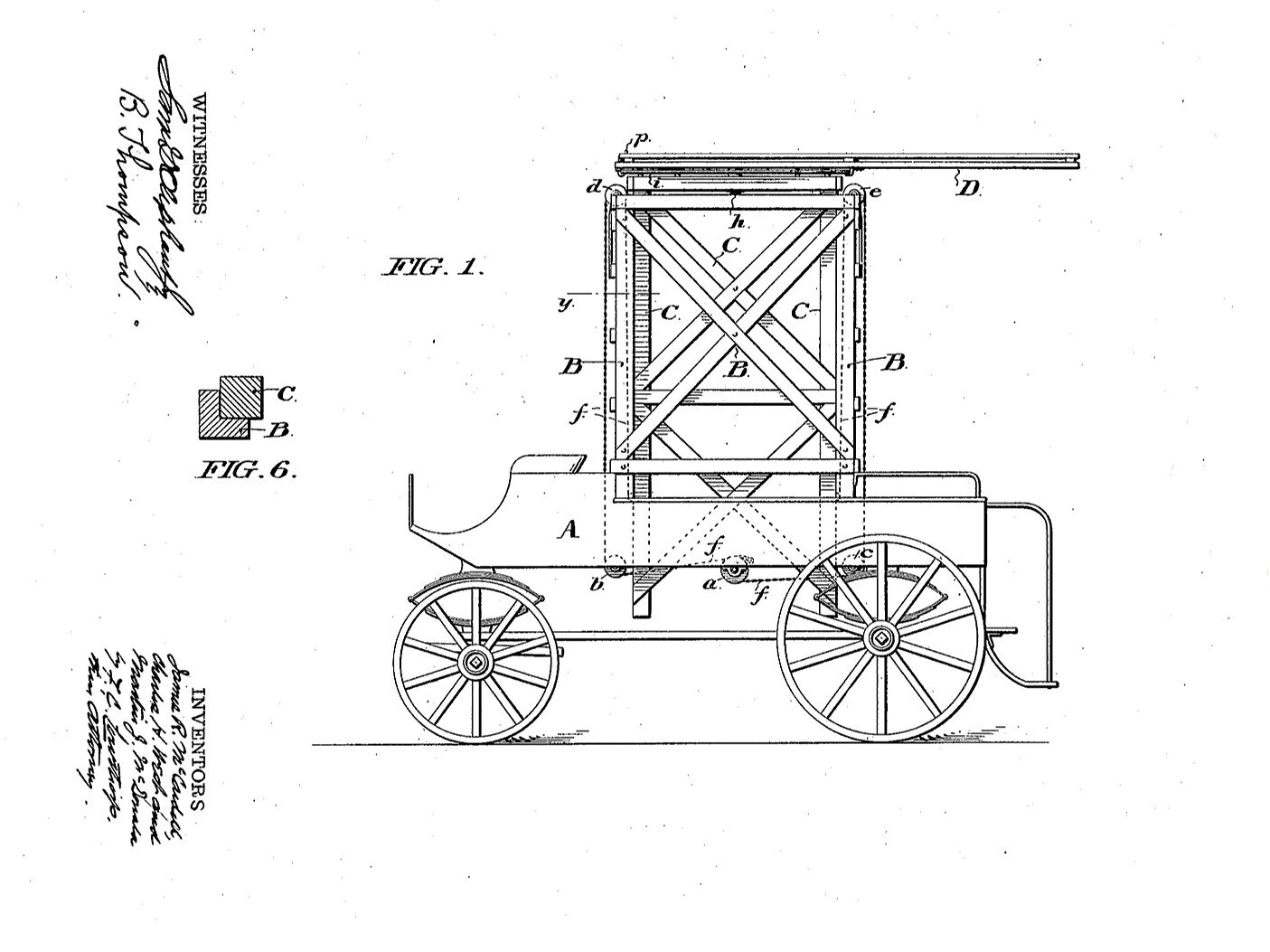
This 1895 patent for a Tower Wagon includes a rotating turntable for the upper platform and work station. Courtesy Wheels That Won The West® Archives.
Styles of these 'Trouble Wagons' or 'Electric Patrols' - as they were sometimes called - could vary between A-frame style ladders and multi-level, elevating platforms. When not in use, the ladders (and some platforms) folded down to a height at or below that of the driver's seat. Other collapsible towers could also be lowered significantly when the job was over; generally,to a height of just over half the fully extended measurement. These telescoping towers could also be equipped with platforms mounted on a revolving base. In the case of work needed on electrical lines above a trolley car system, the design allowed the lineman to park in tight spaces and operate above the trolleys without interfering with the operation and schedules of the passenger line. Deployed heights of the entire rig varied among manufacturers and styles but could approach the twenty-foot mark.
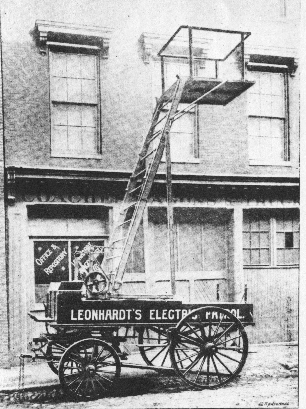
These extendable work stations were often installed on platform wagon gears designed with a tight turning radius.
While there were numerous builders of these vehicles - including the legendary Fish Bros. Wagon Company from Racine, Wisconsin - it is uncommon to come across one of these designs today. Other manufacturers included J.R. McCardell of Trenton, New Jersey and the Leonhardt Wagon Mfg. Co. of Baltimore, Maryland. Many of these American-made Tower or Trolley wagons were shipped as far away as South America, Canada, Europe, South Africa, Australia, New Zealand, Manila, and Mexico. Most of the towers were installed on wagons with heavy platform springs, full circle fifth wheels, and cut-under boxes.This configuration allowed for tight turns and easier maneuverability in confined areas. Like almost all utility-style work wagons, when the horse-drawn days ceased, the value of the designs also disappeared. The result was that many were allowed to deteriorate or were deliberately destroyed.
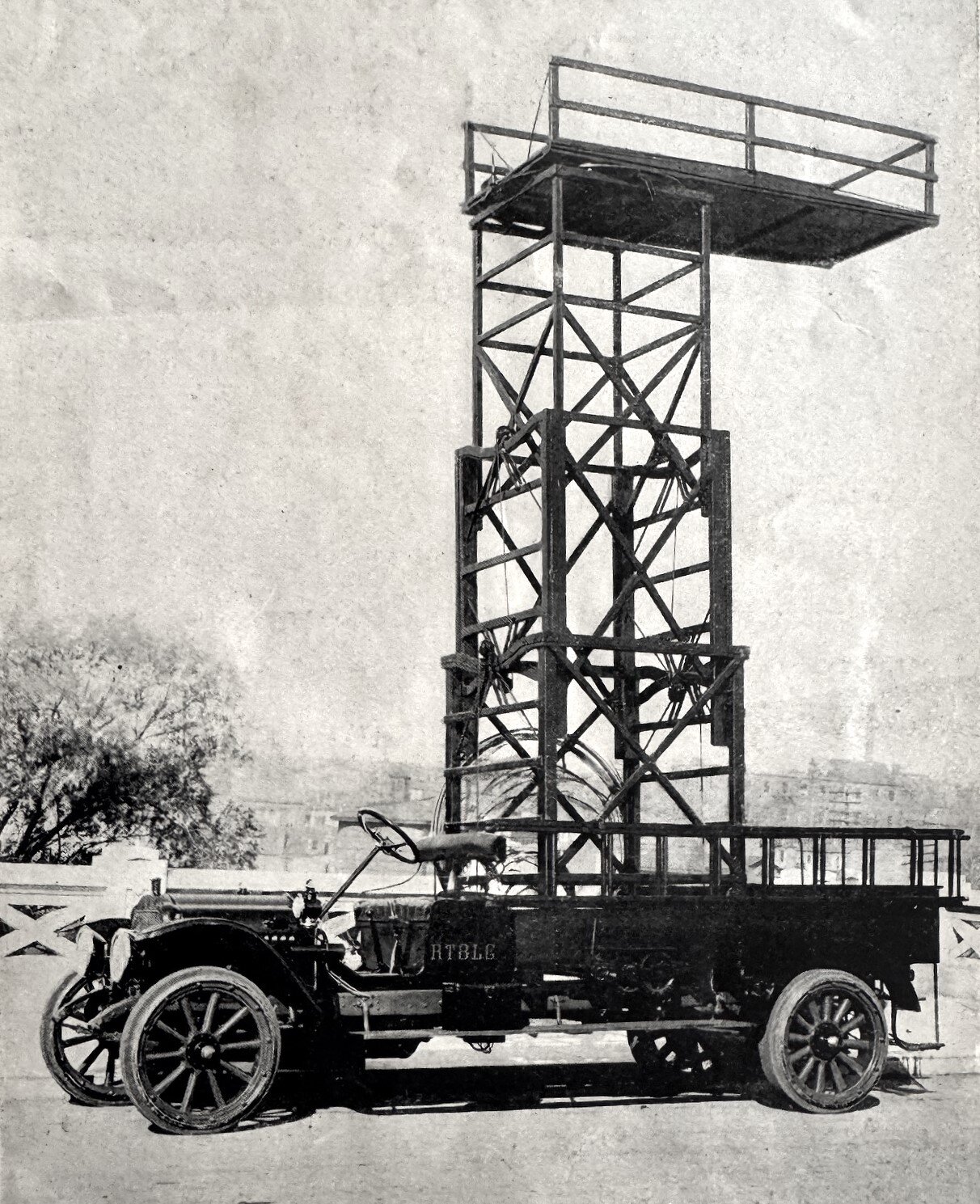
The same extendable towers were also installed in early automobiles. Image Courtesy of Wheels That Won The West® Archives.
Today, there is one place in the world where a person can still experience a true cable car; trollies that are not self-powered but run with the aid of underground cables pulled by an electric motor. That place is the same area where the cars first started in the U.S. on August 2, 1873 - San Francisco. While they primarily serve tourists, the system is now a National Historic Landmark.
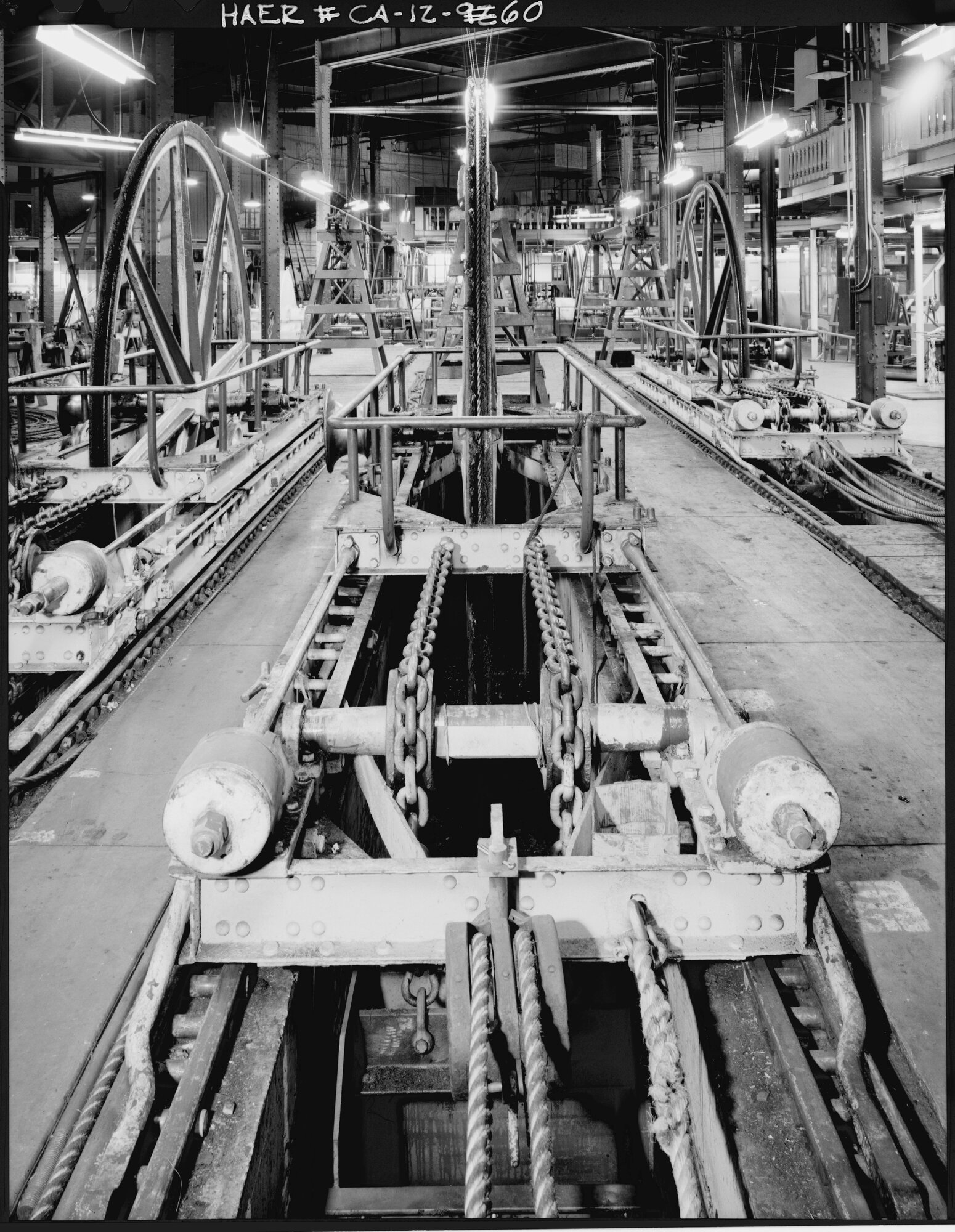
A peek into the unseen mechanics of cable car controls in San Francisco, California. Courtesy Library of Congress.
There is at least one more interesting side note related to the transition of animal-powered trollies to electric streetcars. After the successful switchover from horseflesh, many considered the old versions to be unbecoming and virtually worthless. Nonetheless, there were entrepreneurs who could see potential in the old rides. In San Francisco, many of these horse-powered cars were offered at bargain basement prices. For the creative, the opportunities were a Godsend. Many of the old trollies were turned into businesses like coffee shops, offices, and children's playhouses. Others became small homes and still more were combined with additional cars to become larger, modular homes. Overall, it's a 'tiny house' story that's reminiscent of what some have done with metal shipping containers today. You can check out the history of Carville, California (named for the street cars used as houses) for more intriguing insights into this part of America's wheeled past.
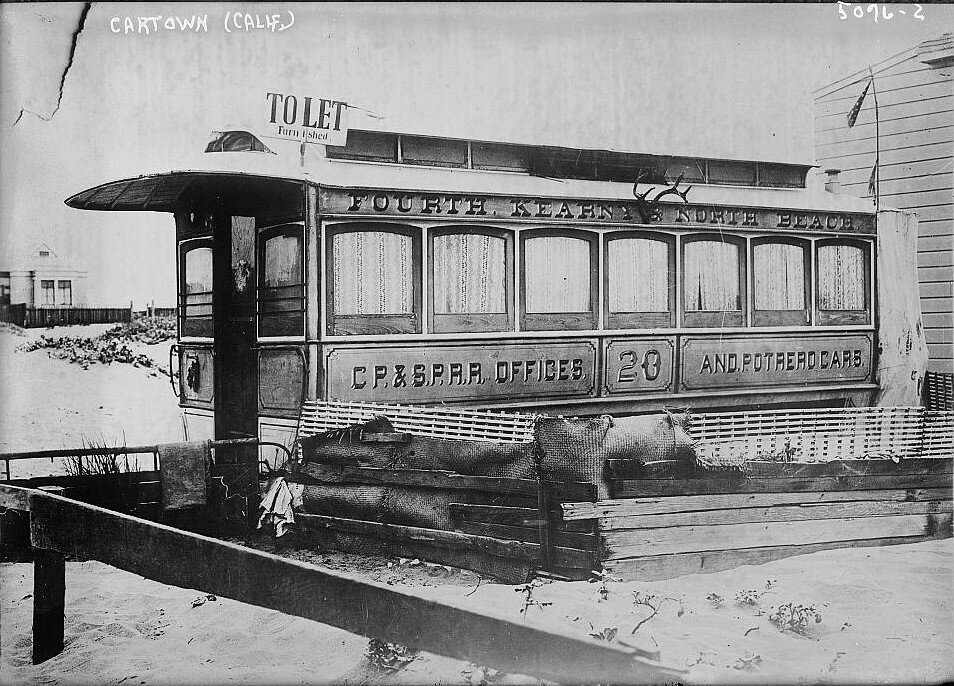
A 1920 photo showing one of the discarded, horse-drawn trolley cars in San Francisco. This one was turned into a room for rent. Most of these were eventually destroyed in the interest of 'progress.' Courtesy Library of Congress.
One thing is clear; the age of downsized living began long ago. As Solomon said in Ecclesiastes 1:9, "What has been will be again, what has been done will be done again; there is nothing new under the sun." (NIV translation)
Have a great week!
David
Psalm 20:7